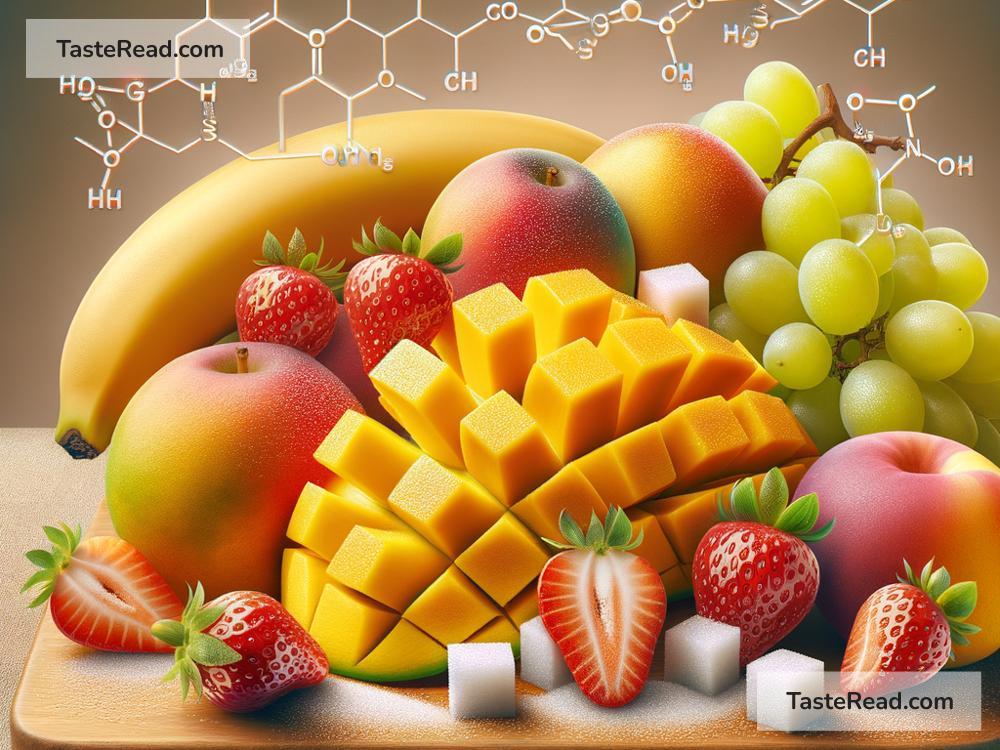The Sweet Science of Fruit Sugars and Their Impact on Taste
Fruit is one of nature’s most delightful snacks, offering sweetness, freshness, and nutrition all in one package. But what makes fruit sweet? The answer lies in the molecular composition of the sugars found in fruits. These sugars not only add sweetness but also influence the flavor, texture, and even the health benefits of fruits. Let’s take a closer look at the fascinating science behind fruit sugars and their role in taste.
What Are Fruit Sugars?
Fruit sugars are naturally occurring carbohydrates that give fruits their sweetness. The main types of sugars in fruit are glucose, fructose, and sucrose. These molecules are important for the energy needs of plants and humans alike. Here’s a simple breakdown of each:
-
Glucose: This sugar is a basic energy source for both plants and humans. Plants produce glucose through photosynthesis, using sunlight to convert water and carbon dioxide into energy. Glucose is moderately sweet on its own and is commonly found in fruits like grapes, bananas, and apricots.
-
Fructose: Often called “fruit sugar,” fructose is the sweetest of the naturally occurring sugars. It’s abundant in fruits such as apples, pears, and mangoes. Fructose contributes heavily to the sweet taste of fruits, even in small amounts.
-
Sucrose: This sugar is a combination of glucose and fructose. Sucrose is commonly known as table sugar, but plants produce it naturally. Many fruits like pineapples, oranges, and peaches contain sucrose, contributing to their signature sweetness.
These sugars vary in proportions depending on the fruit, which is why some fruits taste sweeter than others.
How Fruit Sugars Affect Taste
The sweetness we perceive when eating fruit comes from how our tongues respond to these sugar molecules. Sweetness is detected by special taste receptors on the tongue. When sugars touch these receptors, they send signals to the brain, where the sensation of sweetness is interpreted.
But taste isn’t just about sweetness—it’s also influenced by other factors like acidity and texture. The balance between sweetness and acidity plays a huge role in determining a fruit’s overall flavor profile. For example:
- Sweet fruits like mangoes and cherries have high sugar content and low acidity, making their taste rich and sugary.
- Tangy fruits like lemons and grapefruits have lower sugar levels and higher acidity, giving them a sharp, zesty flavor.
- Balanced fruits like apples and strawberries have a good mix of sugars and acids, creating a harmonious sweet-tart taste.
Interestingly, the specific ratio of glucose, fructose, and sucrose in a fruit also changes how we experience its sweetness. Fructose, being the sweetest, often makes fruits taste sweeter even if they contain less sugar overall.
Why Do Fruits Taste Different?
If all fruits contain sugars, why don’t they all taste the same? The answer lies not just in sugar content but also in other factors like:
-
Acidity: Fruits contain naturally occurring acids like citric acid (found in citrus fruits) and malic acid (found in apples). High acidity counteracts sugar and makes fruits taste less sweet, adding complexity to their flavor.
-
Other compounds: Fruits also contain molecules like vitamins, minerals, and plant compounds known as polyphenols. These compounds can add bitterness, enhance sweetness, or create unique flavors.
-
Ripeness: The sweetness of a fruit changes as it ripens. When fruits are unripe, they often contain more starches and less sugar. Over time, enzymes break down these starches into sugars, making the fruit sweeter. For example, a green banana tastes less sweet than a ripe, yellow banana because its starches haven’t fully converted into sugars.
-
Variety: Different types, or varieties, of the same fruit can taste drastically different because of varying sugar compositions. For instance, a tart green apple like Granny Smith has less sugar than a sweet red apple like Fuji.
Impact on Nutrition and Health
Fruit sugars play a significant role in nutrition. Unlike added sugars found in candies or sodas, the sugars in fruit come with fiber, vitamins, and minerals that help the body process them slowly. This slower digestion prevents sharp spikes in blood sugar and provides lasting energy.
But not all fruits have the same sugar content. Some, like watermelon and berries, have relatively low sugar levels, making them a great choice for those watching their sugar intake. Others, like bananas, grapes, and mangoes, are naturally higher in sugar. That said, these sugars are not harmful when consumed in moderation as part of a balanced diet.
How Fruit Sugars Enhance Enjoyment
Fruit sugars give us more than nutrition—they provide joy through taste. Whether you bite into a juicy peach, snack on fresh strawberries, or enjoy a crisp apple, it’s the delicate balance of sugars and acids that creates the irresistible flavor we all love.
So, the next time you savor a piece of fruit, remember the invisible science working behind the scenes. Those tiny sugar molecules are responsible for the sweet, tangy, or tart experience that makes eating fruit so satisfying. In essence, fruit sugars are nature’s secret ingredient for deliciousness!


